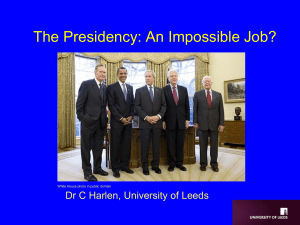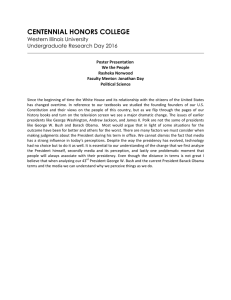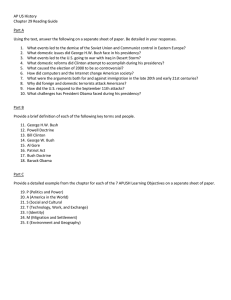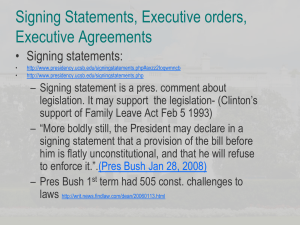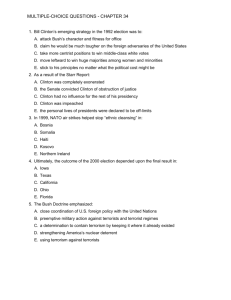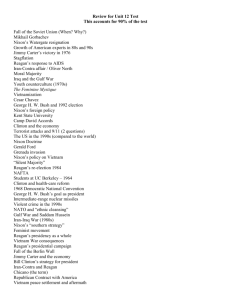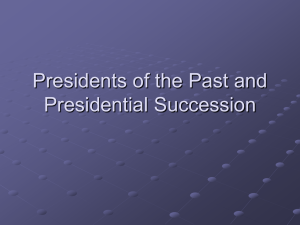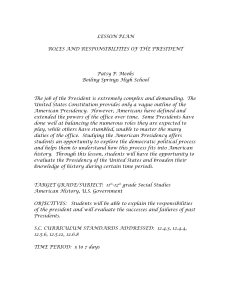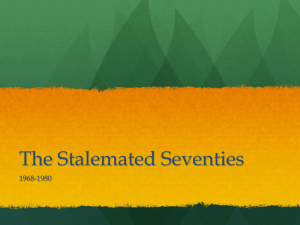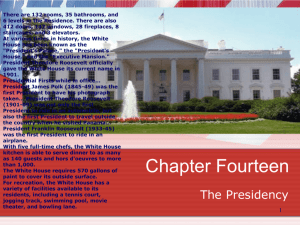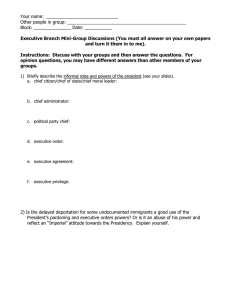Roles of the President
advertisement
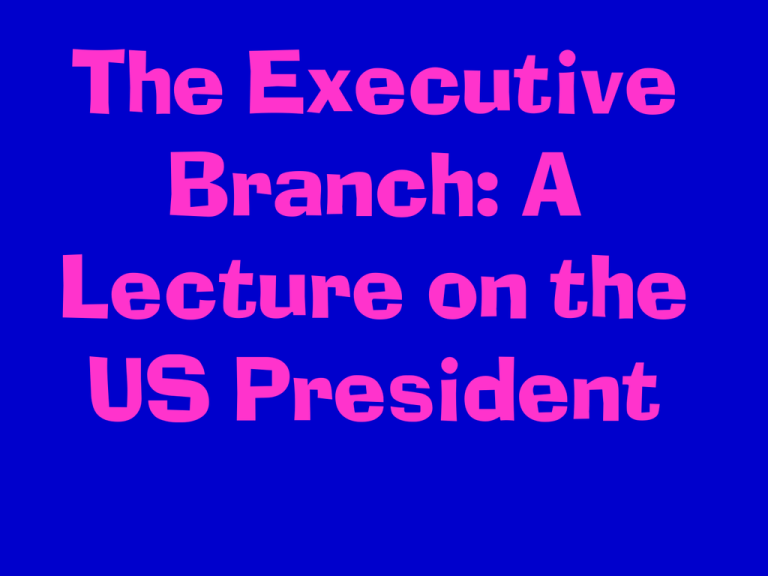
The Executive Branch: A Lecture on the US President Forty-four men have been president of the United States . . . Article II of the US Constitution . . . The executive Power shall be vested in a President of the United States of America . . . Requirements to be the United States President . . . *35 years of age *natural-born citizen *continuous residency in US for 14 years President Washington set the tradition of serving only two terms. FDR was the only president to serve four terms. The 22nd Amendment, ratified in 1951, limited all presidents to two terms. Two presidents have been impeached: Andrew Johnson & William Jefferson Clinton Neither executive was found guilty or removed from office . . . Nixon would have been impeached, but he resigned from office. One president, Ford, was not elected to either the position of vice presidency or presidency. He became VP when Agnew resigned; he became president when Nixon resigned. This is what Nixon had to say at the beginning of the Watergate investigation . . . “I am not a crook!“ Roles of the President of the United States . . . Chief of State Represents the US in foreign matters; Acts as a symbol of the US. Example: President Roosevelt represented the United States at the Yalta Conference during The Second World War. Chief Executive Head of federal bureaucracy: *14 Cabinet Departments *Agencies, Independent Regulatory Commissions *Government Corporations The Cabinet of the President: Chief Diplomat: *Conducts foreign policy *Negotiates & signs treaties & trade agreements (Senate ratifies) The president has the most power in foreign policy. Example: President Bush met with Prime Minister Sharon to discuss the situation in the Middle East. Chief Legislator: +Congress makes the laws. +President may propose a legislative agenda. +President signs/vetoes bills. Example: President Johnson signed the Civil Rights Act of 1964: Commander - in - Chief: The president is in charge of the US armed forces; he works closely with the Secretary of Defense & the Chairman of the Joint Chiefs of Staff. Example: President Truman made the decision to drop the atomic bomb on Hiroshima & Nagasaki. Chief of the Party The presidents head up their political party; they make campaign speeches for Senators & Congressman in their party are running for re-election; they also raise $$$ for their party. Example: President Obama will campaign to re-elect Democratic Congressmen & women in 2019. Chief Guardian of the Economy: The president monitors unemployment, inflation, taxation, business an general economic welfare of the nation. If the economy does well, the President gets the credit. Example: Clinton was elected in 1992 over Bush due to the failure of Bush to address economic problems. A popular Clinton slogan : “It’s the Economy, Stupid!” Leader of the Free World Example: President Wilson led the World in the aftermath of WWI, when he journeyed to France to discuss his 14 Points and to negotiate the Treaty of Versailles.
